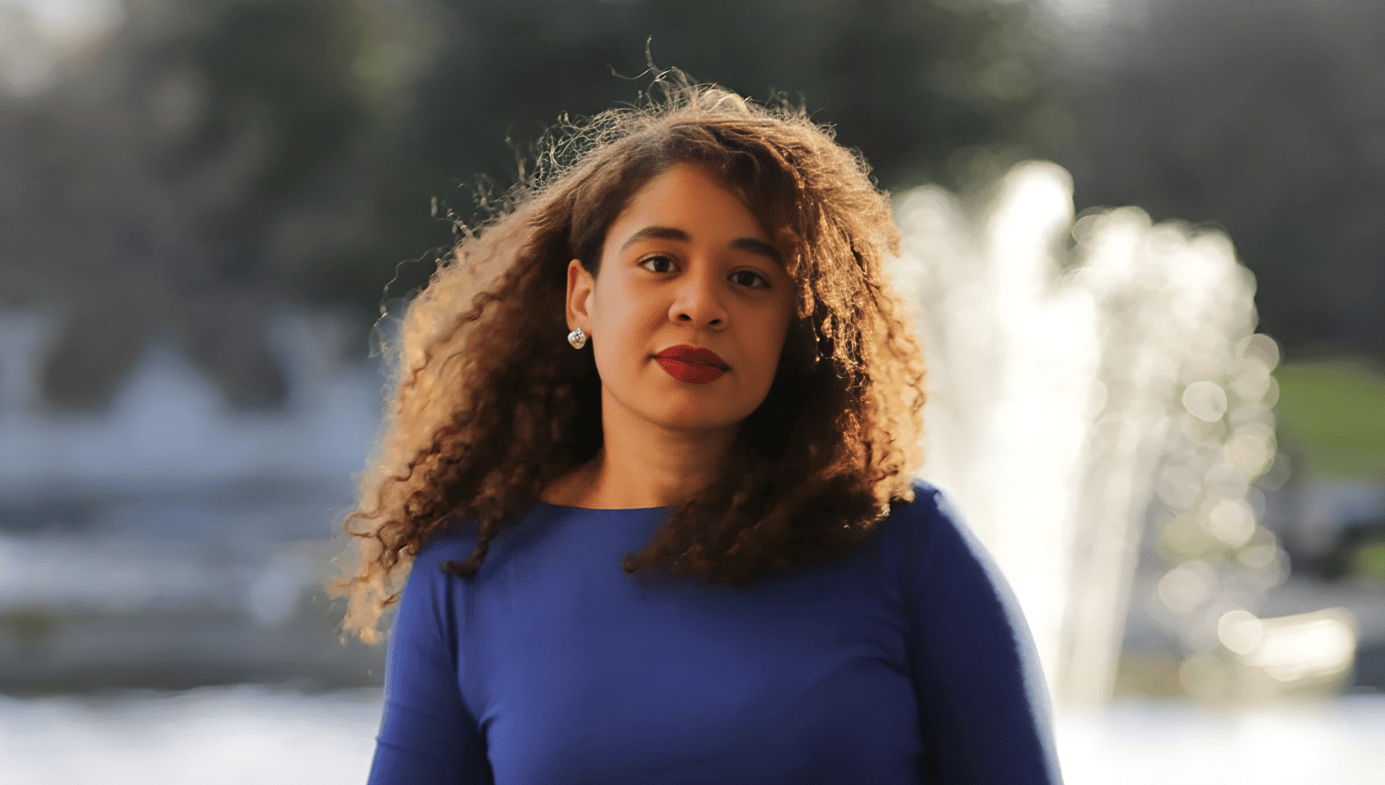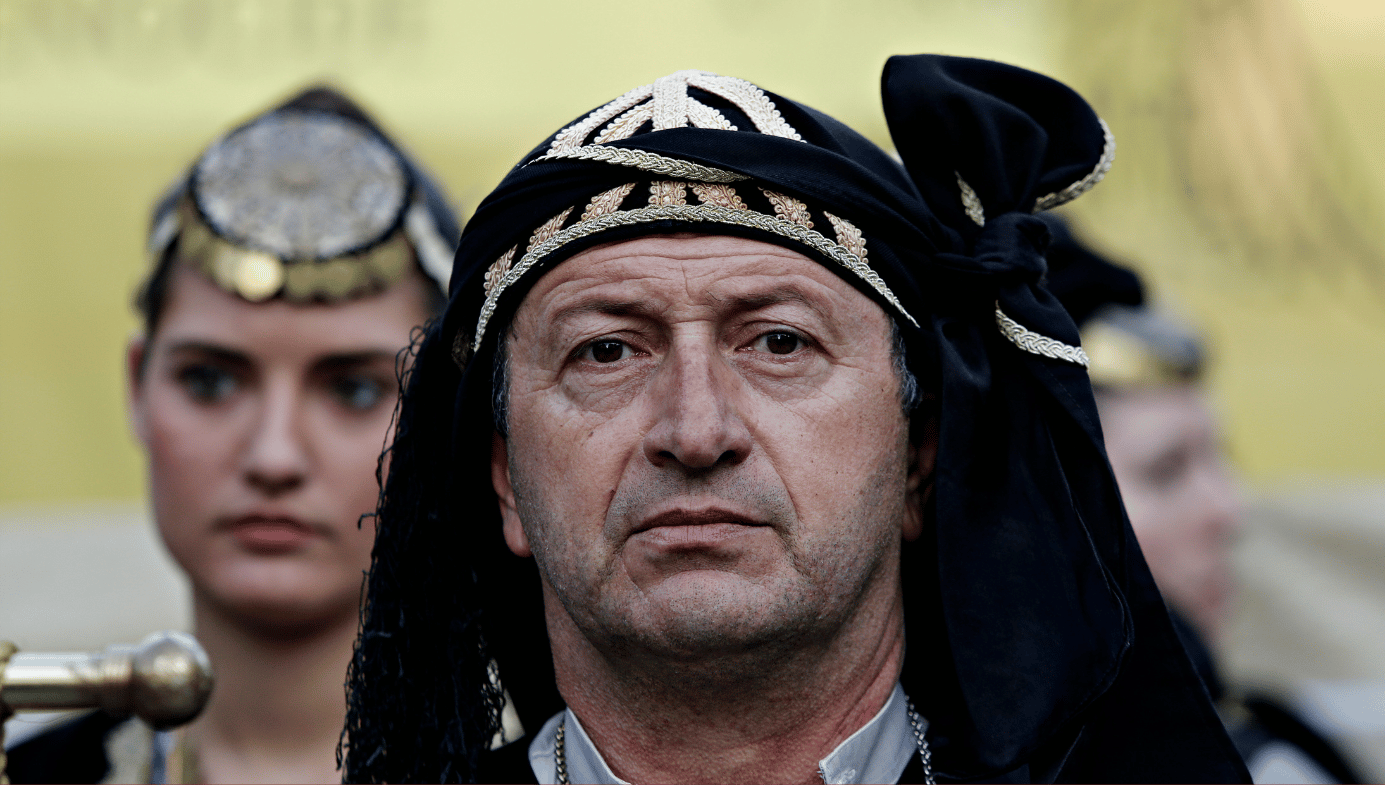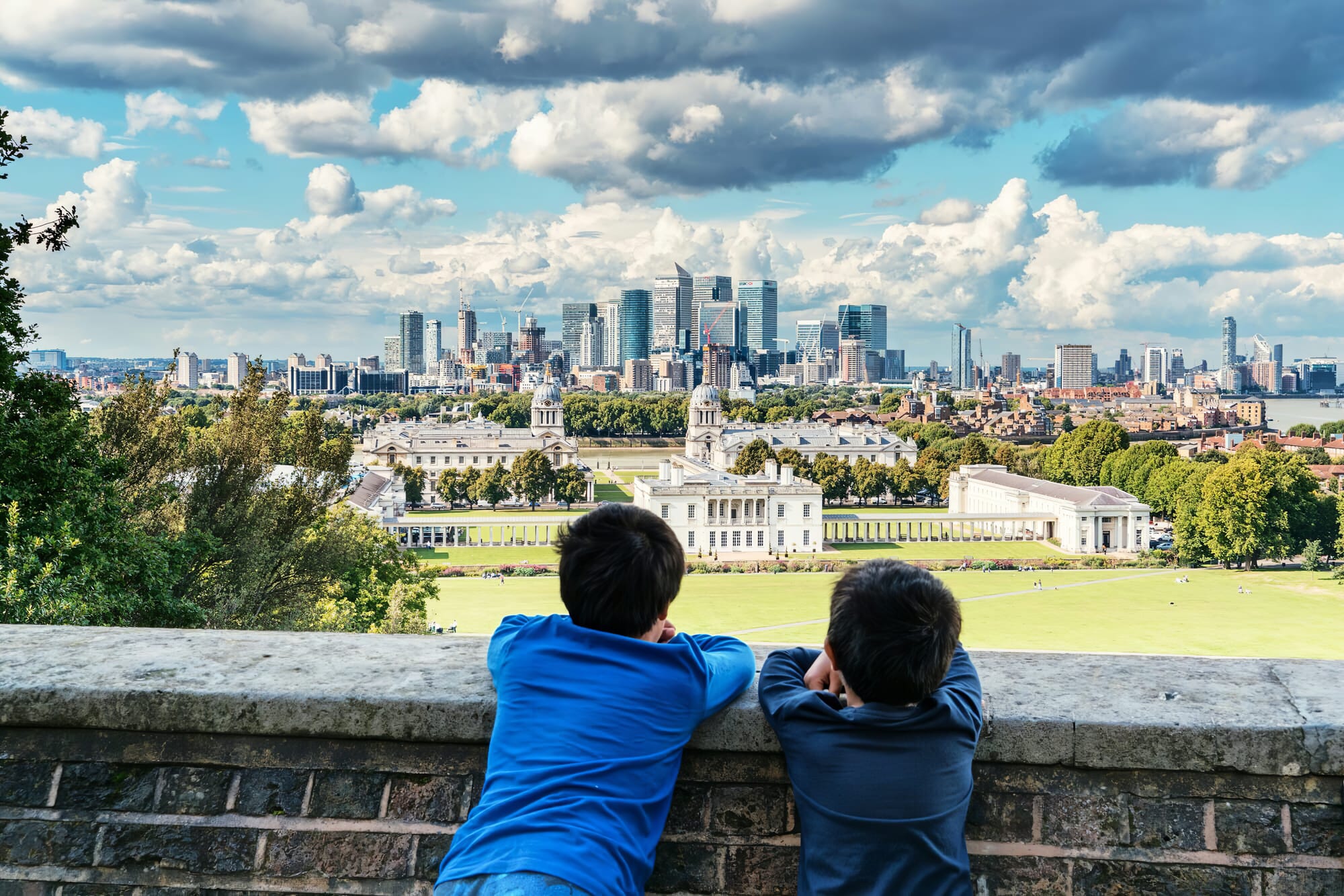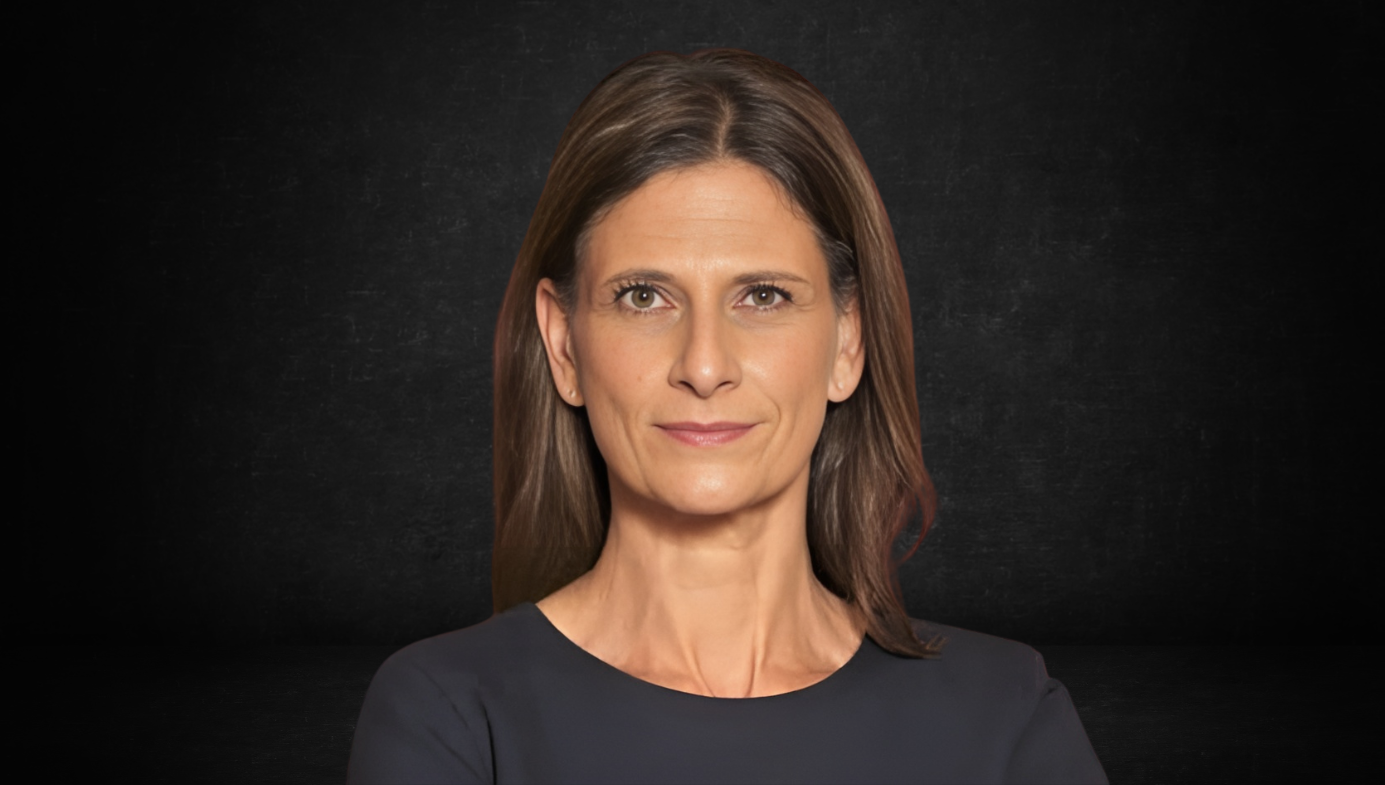Islamist Terror; Journalistic Error
In a valuable new book, historian Richard Landes argues that Western reporting on the Second Palestinian Intifada helped to seed a misunderstanding of terrorism.
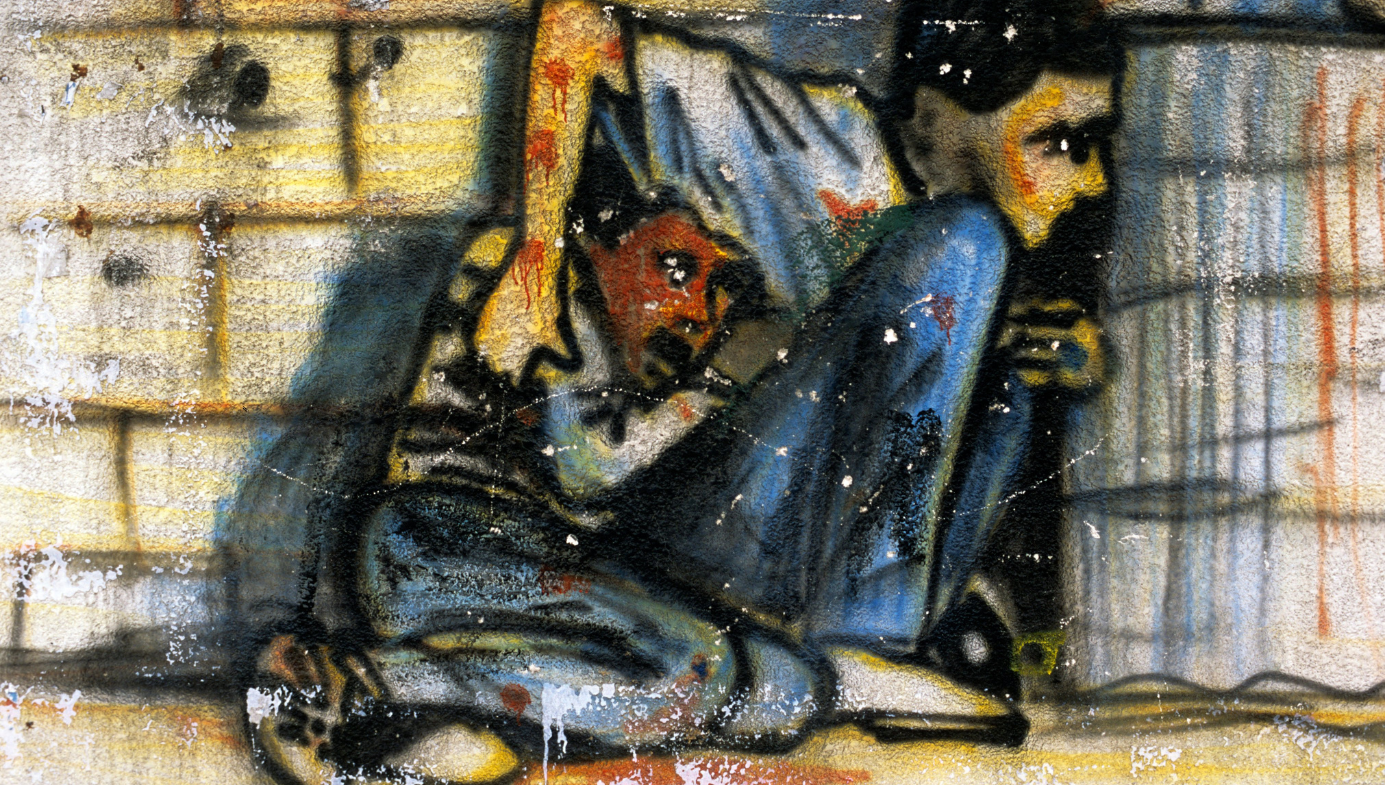
A review of Can “The Whole World” Be Wrong?: Lethal Journalism, Antisemitism, and Global Jihad by Richard Landes, 523 pages, Academic Studies Press (November 2022)
In Can “The Whole World” Be Wrong?, Richard Landes, a historian of apocalyptic movements in medieval Europe, re-examines the reporting of Palestinian attacks on Israel, starting with the Second Intifada that began in September 2000. Principally, he looks at the ways in which postcolonial ideology and the intimidation of journalists have been used to obscure the links between Islamist ideology and terrorist practice, and how this process disfigures public discourse and understanding.
Many of Landes’s points and arguments will be familiar to those who have followed this topic over the years—his criticisms of anti-Zionists like Edward Said, Judith Butler, and Tony Judt; his disapproval of Western feminists’ reluctance to denounce Islamist misogyny and antisemitism; and his impatience with progressive Jewish academics reluctant to address the Islamist ideological sources of the terrorist campaigns against Israel. It would also have been a better book at half the length, and some of the language—“lethal journalism,” “Caliphator,” “demopolitics,” “cogwar,” “cognitive warrior”—is unnecessarily hot. Nevertheless, overall, Landes’s new work makes a distinctive and valuable contribution to the large body of existing literature on antisemitism and the global jihad.
This is especially evident when he foregoes his fondness for polemic and instead brings his excellent skills of close reading, textual analysis, and attention to detail to bear on the material. At its core, this is a compelling critique of the various journalists and public figures—especially in France, Britain, and the United States—who managed to be consistently wrong about the facts and their causes. Their errors were not random, however. Landes argues that they resulted from a combination of political biases and threats issued by Palestinian organizations. The failure of journalists, in particular, to grasp the ideological causes of the attacks on the Jewish state in 2000 helped to prevent a coherent understanding of the Islamist attacks on the United States and Europe that followed.
Since the establishment of the Islamic Republic of Iran after the revolution of 1979, the publication of the Hamas Covenant in 1988, and al Qaeda’s declaration of jihad against Jews and Crusaders in 1998, the governments of the West’s liberal democracies have, with only a few exceptions, been reluctant to speak clearly about the causal connection between Islamist ideology and violence. This reluctance persisted through the Second Palestinian Intifada, the terrorist atrocities of September 11th, 2001, and those that followed in London, Paris, Madrid, Berlin, and Amsterdam. The Bush administration described Islam as “a religion of peace” even as quotations from the Koran were filling terrorist manifestos, and any analysis of the connection between Islamism and terror was absent in the Obama years. The popularisation of a new term, “Islamophobia,” became a rhetorical cudgel with which to beat anyone who noticed references to Islamic texts in the Islamist literature celebrating terrorism.
In response to this era of Islamist inspired terror, a body of scholarship and intellectual intervention emerged that sought to introduce some nuance and clarity into the public debate. It included Paul Berman’s Terror and Liberalism (2003); Matthias Küntzel’s Jihad and Jew-Hatred: Nazism, Islamism and the Roots of 9/11 (2007); Robert Wistrich’s A Lethal Obsession: Antisemitism from Antiquity to the Global Jihad (2010); Bassam Tibi’s Islamism and Islam (2012); and my own historical scholarship on links between Nazism and Islamism. In 2006, the “Euston Manifesto” was launched by a small group of British left-leaning intellectuals led by political theorist Norman Geras, a document intended as a corrective to the apologia and avoidance that its authors felt was disfiguring left-wing discourse about Islamist violence.
Such works, and many others besides, offered compelling evidence that Islamist ideology and the movements it inspired were profoundly reactionary phenomena. The authors did not traffic in bigotry or religious intolerance. They were careful to distinguish between Islam (a religious faith) and Islamism (the much more recent theocratic doctrines of which drew on the early 20th century’s totalitarian ideologies). They did, however, insist upon the obvious links that exist between Islamist ideology and terrorist practice. Islamists have made clear that they are profoundly hostile to liberal democracy and pluralism, and are committed to the subordination of women and the persecution of homosexuals. They are also ineradicably imbued with hatred of Judaism, Jews, and therefore of the state of Israel. The Middle East Media Research Institute (MEMRI) regularly publishes excellent translations of Islamist speeches and tracts in which these hatreds and resentments are made unambiguously apparent.
Yet despite two decades of the oddly named “war on terror,” Western governments, including that of the United States, have stubbornly refused to bring discussion of Islamism and Islam into the public sphere. The correctives were ignored or, worse, attacked as evidence of Western intolerance and Islamophobia. At least some historians in years to come will note that this refusal to speak frankly about the nature and impact of Islamist ideology was one of the most peculiar yet defining aspects of intellectual and political life in the democracies forced to cope with Islamist terrorism.
Western government officials, anxious not to inflame tensions in their own multiethnic societies or fan antagonism to Muslims and Islam, showed little interest in speaking frankly about the issue. So, instead, they simply recited the mantra about a “religion of peace” and ignored the considerable scholarship about the radical interpretations of Islam that were, in fact, fueling the violence. The Bush and Obama administrations did not try to educate the American public about the nature of Islamism, nor did they wage an ideological battle with the jihadists. There has been a predictable price to pay for this era of euphemism and avoidance, as anti-Muslim demagogues filled the gap left by the silence of Western officials. Donald Trump and others replaced euphemisms with open bigotry, verbal attacks on Muslims, lies, conspiracy theories, and exaggerations.
The heart of Richard Landes’s book consists of an examination of what he calls “lethal journalism” among the journalists who covered Israel in the early 2000s. He begins by dissecting an incident that occurred on September 30th, 2000, when Charles Enderlin, France 2’s bureau chief in Israel, filed a report based on footage provided by the channel’s Palestinian stringer, Talal abu Rahma. It purported to show that gunfire from Israeli soldiers killed Muhammad al Durah, a defenseless 12-year-old Palestinian boy, and seriously wounded his father, Jamal, as they cowered behind a drum during a firefight on the third day of the Intifada. The Israelis were also accused of shooting up a Palestinian ambulance and killing its driver. In a sworn deposition to a notary from a Palestinian organization, abu Rahma later testified that the Israelis had murdered the young boy “in cold blood.”

In 2003, Landes had the opportunity to view the original tape from which the al Durah clip was taken. In response, he launched the Al Durah Project online, a website where anyone can compare the report broadcast by France 2 with the raw footage shot by abu Rahma. In his book, Landes summarizes the multiple problems that he and others uncovered in the uncut footage: “the direction of the bullets, the lack of blood (especially for a fatal stomach wound), the account of the father and son allegedly injured/dead, the sudden absence of other cameramen at the scene to film extraordinary events, the position of the two victims with the boy in take one kneeling and take four (after being hit) on his stomach at the same spot, the lack of footage to back up a claim of an ambulance shot up and driver killed…” Landes began to wonder if the whole scene might have been a hoax, staged to hoodwink gullible Western journalists.
I wish Landes had included more of his website’s material in the book. The Al Durah Project offers an excellent example of one historian’s efforts to present and weigh evidence. He finds the evidence the al Durah shooting was staged to be considerable but, careful historian that he is, refrains from a definitive conclusion. Yet even if the event was not staged, the evidence he marshalls convincingly demonstrates that gunfire from the Israeli position could not possibly have been responsible for the boy’s death. The result was a 21st-century blood libel manufactured to paint Israelis—yet again—as the heartless murderers of children:
The image of the terrified boy under merciless fire from the Israelis rapidly mutated from a sensational news scoop to that of a mythical icon, which, in turn, swept through the Muslim world and the West. It became the icon of hatred for the twenty-first century. One cannot underestimate its impact. And yet purely in terms of journalistic procedures, this episode constitutes one of the most monumental failures of professional journalism in the long and volatile history of war journalism.
The two key ingredients of that failure were the cameraman, abu Rahma, an expert at filming staged events (a practice that Landes calls “Pallywood”), and Enderlin, who accepted abu Rahma’s account without question and provided a commentary that ratified the latter’s allegations. The upshot was “the first major (still uncorrected) ‘fake news’ in the new century.” The inconsistencies Landes identified ought to have raised red flags not only for Enderlin, but also for the leading war correspondents who uncritically repeated the story, including Robert Fisk at the Independent, Gillian Findlay at ABC, Susanne Goldberg at the Guardian, and CNN’s Mike Hanna. Instead, these reporters and “an entire generation of ‘investigative journalists’” in Israel “failed to do the research or state the obvious”—that the clip did not prove what it claimed.
In 2003, the Atlantic published a lengthy investigation into the incident by journalist James Fallows, a former speechwriter for Jimmy Carter. Although Fallows also remained agnostic about the theory that the event was staged (what he calls the “maximum” Israeli case), he did conclude that “the physical evidence of the shooting was in all ways inconsistent with shots coming from the IDF outpost.” But rather than probe these discrepancies, most leading journalists simply assumed that the footage—which never showed Israeli soldiers doing anything—was evidence that the IDF had killed the boy.
France 2 and Enderlin responded by filing lawsuits against their critics, including Philippe Karsenty, a politician who ran a website devoted to monitoring media bias. Landes documented the ensuing legal saga on his site. In 2006, a French court found Philippe Karsenty guilty of defamation for alleging that the al Durah report had been staged. In September of the following year, a panel of three judges convened to hear Karsenty’s appeal, and ordered France 2 to provide the court with the unedited footage. In May 2008, they overturned the lower court’s verdict and acquitted Karsenty. In an article about the trial for the Wall Street Journal that Landes reproduced on the Al Durah Project, Nidra Poller remarked:
The media that dramatically reported the killing of Mohammed al-Durra are deathly silent today. They didn’t inform the public about the ongoing controversy, didn’t attend the trials and have apparently decided to place this story into an artificial coma. As if this judgment against a colleague who placed blind trust in his Palestinian cameraman and, when called to clarify his report, attacked the questioner instead of questioning his own competence were not newsworthy?
The press corps has consistently closed ranks with Charles Enderlin. One week before the verdict was announced, pay-to-view TV station Canal+ aired a documentary seemingly concocted for the purpose of branding Philippe Karsenty—and anyone who challenged the al-Durra story—as conspiracy-theory crackpots.
“In a move unprecedented in media litigation,” Poller noted, “France 2 and Mr. Enderlin have referred the case to France’s highest court (the Cour de Cassation), which rules solely on technicalities, not on substance.” This appeal of last resort was to prove successful—the Supreme Court ruled that France 2 should not have been compelled to provide their uncut footage, overturned the appeal verdict, and Karsenty was duly re-convicted of defamation in 2013 and fined €7,000.
If France 2’s “lethal narrative” was, as Landes claims, “designed to create hatred and inspire violence,” it must be judged a success. In an address after 9/11, Osama bin Laden declared, “Bush must not forget the image of Muhammad al Durah and his fellow Muslims in Palestine and Iraq. If he has forgotten, then we will not forget, God willing.” An image of the boy was projected on the wall behind Daniel Pearl before his execution. This was all, Landes maintains, the result of “Palestinian malevolence and one Western journalist’s professional malfeasance,” and it “elicited no critical thinking” among most of his peers.
I do remember Muhammad Al-Dura. His picture was projected behind my son, Daniel Pearl, in the last video taken of him, ostensibly to justify his murder.
— Judea Pearl (@yudapearl) May 13, 2022
How many people will now be killed due to Al-Jazeera's fabrications?
When would this deceitful culture be told: LIES KILL! https://t.co/I6lCm4qnxH
In the Middle East and Europe, the now-iconic image of al Durah and his father cowering behind the barrel became a recurrent feature at anti-Israel demonstrations. It helped to foster what Landes calls the “replacement narrative” circulated by activists who hope to substitute Israel for Nazi Germany as the epitome of contemporary evil. One commentator even compared al Durah to the iconic photo of the terrified boy with his hands up in the Warsaw Ghetto. Journalism like this laundered Palestinian propaganda as if it were objective reporting and contributed to the perception of Israel as a uniquely evil, racist, and even genocidal state. This, in turn, made it easier to defend and justify the terrorist campaigns and suicide bombings that had resumed in 2000 after the collapse of US-mediated peace talks between Israel and the PLO at Camp David. He concludes that these journalistic errors helped to foster what became known as the “new antisemitism.”
The al Durah incident was by no means unique. “In scene after scene,” Landes argues, “Palestinians staged scenes of battle, injury, ambulance evacuation, panicked flight which the cameramen deliberately featured. There were signs of makeup men, producers, and directors at work” on “multiple makeshift stages” producing “action sequences.” Injuries, he says, were faked and the supposed victims were carried to a waiting ambulance which then sped away with its sirens blaring. For the Palestinian authorities, journalism became a tool of the terror campaign being waged against Israel. Its intent was to turn perpetrators into victims, a goal that Landes says was also accomplished with alarming success.
At the height of the terrorist assaults during the Second Intifada, CNN, NPR, the AP, Reuters, and MSNBC instructed correspondents not to use the word “terror” or “terrorist” when referring to Palestinian attacks on Israeli civilians. “Militants” was the preferred noun. Western correspondents and editors did not grasp—or, at least, refused to acknowledge publicly—the central role of apocalyptic, religiously inspired visions of Islamist jihad that were being clearly expressed in numerous terrorist manifestos and disseminated by radical clerics in mosques. This linguistic reticence implied that the Palestinian terror campaigns were a response to Israel’s repressive policies, even though it was Arafat who launched the armed attacks after he rejected Israeli and American offers of a Palestinian state in the West Bank and Gaza in 2000 and after Israel withdrew from southern Lebanon. Nor was the Israeli withdrawal from the Gaza strip in 2005 rewarded with peace in that enclave.
The result, Landes argues, was a deficiency of empathy for Israelis as they endured the terrorist campaigns in the first years of the new century. In Terror and Liberalism, Paul Berman observed that the more the Palestinian Arabs engaged in terror attacks on Israeli civilians, the more parts of the Western Left concluded that only Israeli oppression could account for such desperate violence. Landes refers to this tendency as “the collapse of the cultural Maginot line,” because the attacks against Israelis in 2000 were a prelude to the global jihad that emerged on 9/11, and in subsequent attacks on the United States, Europe, and Australia, not to mention Muslims in the Middle East and Asia during the following two decades.
Landes’s language is at times overwrought. He refers to “liberal cognitive egocentrics and their demopathic Kryptonite,” “oxymoronic progressives” with a “Y2K mind” who engaged in “preemptive Dhimmitude” and offered support to a “woke Jihad.” My preference would have been for greater understatement. That said, he supports his colorful rhetoric with plenty of evidence. Faced with a reactionary and homicidal assault inspired by Islamist fanaticism, too many prominent academics, journalists, and intellectuals offered a range of excuses or simply fell silent, preferring to accuse those who pointed to the ideological origins of this terrorism of “Islamophobia” or racism.
Despite his palpable anger and exasperation with the Western dishonesty that attends this topic, Landes avoids that trap. His focus is on the facts and the tendentious way in which they are routinely reported, because this has led to a misunderstanding of the Arab-Israeli conflict and the moral arguments it involves. After all, if it were true that Israel treats Palestinians as the Nazis treated Jews, that the IDF perpetrated a massacre in Jenin, and that Muhammad al Durah was intentionally targeted by Israeli soldiers, then denunciations of Israel as racist and oppressive would be assertions about realities not antisemitic calumnies.
But Landes understands that refuting Palestinian propaganda requires more than simply correcting disinformation. He wants us to understand why so many Western journalists failed to report the truth. They did so partly due to ideological inclination. The journalism of those years resulted from “the hegemonic victory of an advocacy journalism that systematically adopted one side’s narrative, reporting its accusations and talking points as credible if not true, and doubting and challenging rebuttals from the other side. This ‘lethal journalism’ consistently delivered war propaganda of the favored side as news to the audience in the West.”
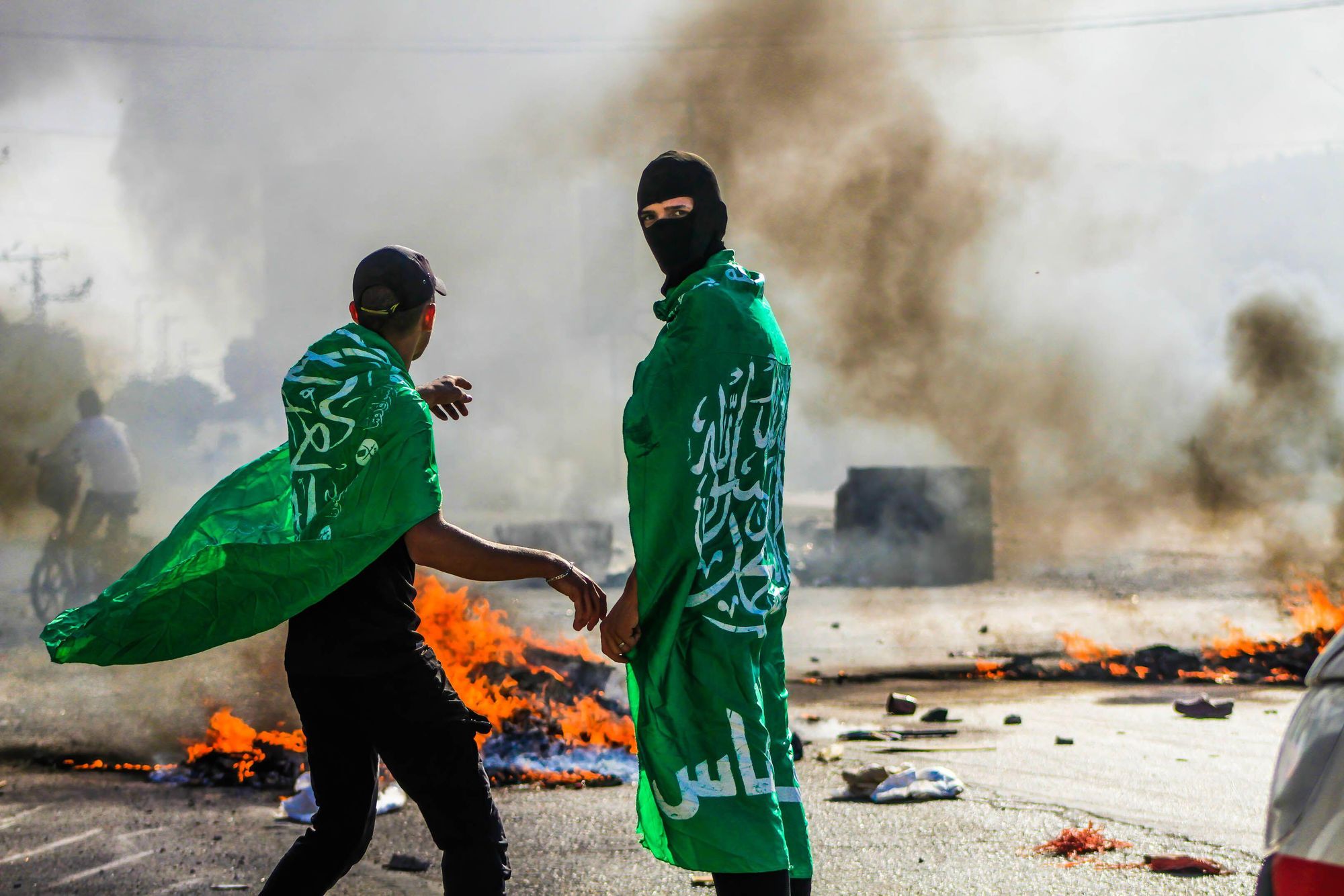
Landes writes that, as a result, much Western reporting of the Arab-Israeli conflict came to follow a four-fold approach. First, it reframed the conflict as one of an Israeli Goliath vs a Palestinian David rather than a tiny liberal democracy surrounded by theocratic and autocratic enemies. Second, it reported Palestinian claims as reliable until proven otherwise “while treating Israeli counterclaims as dubious, if not false, until proven true.” Third, it reported “as little as possible about the religious culture of genocide and terrorism that flourishes in Palestinian-controlled areas.” And fourth, it corrected “errors that result from this approach as slowly and inconspicuously as possible.”
This pattern, he writes, was established by the al Durah episode and by lurid reports of an alleged “massacre” in Jenin in 2002 that never occurred. Reporting during the Second Intifada, and during the short conflicts that have flared periodically in the years since with terrorist groups in Lebanon and Gaza, have routinely exaggerated the numbers of Palestinian civilians killed, especially children. Rather than dwell on the ideology that inspired terrorist attacks or on the details of those attacks, press accounts and headlines focused instead on the fallout from Israeli retaliation.
This journalistic imbalance incited further bloodshed. On October 12th, 2000, just weeks after the broadcast of the al Durah footage, a crowd of Arab marchers chanting “revenge for the blood of Muhammad al Durah” broke into a police station in Ramallah. Landes writes that they “literally tore the bodies of two Israeli soldiers apart and dragged the half-burnt pieces through the streets.” Sheik Halabaya, a paid appointee of the Palestinian Authority, delivered a sermon on the PA’s television station the next day, in which he announced that the Jews “are all liars. They must be butchered and must be killed. … Make war on them any place you find yourself. Any place that you meet them, kill them.” Israel retaliated for the murder of its two reservists with a nighttime bombing of the offices of Voice of Palestine radio.

In an article for the New York Times about this sequence of events, William A. Orme briefly referred to the televised sermon by Halabaya, whom he quoted as saying, “whether Likud or Labor, Jews are Jews.” Orme did not cite the passages explicitly calling for murder and butchery. The Israeli complaint about incitement was represented by a single line from an Israeli colonel. A Palestinian talk-radio host named Ibrahim Milhem was allowed far more space to deny accusations of incitement, defend the integrity and rigor of Palestinian media, decry Israeli censorship, and attack Israeli hypocrisy. “Every word the Israelis hear on the Voice of Palestine they think is incitement,” he told Orme. “But what they are hearing is Palestinians demanding our rights.” The whole tenor of the article leaves the impression of a fearsome military attempting to intimidate plucky journalists.
The result, Landes writes, was a “twin victory for the jihadis.” Readers of the New York Times remained uninformed about the murderous incitement in Halabaya’s sermon, and Israel appeared to have overreacted to the mundane assertion that Labor and Likud MKs are Jews by rocketing a radio station. Landes contends that the “mutilated quote” and the failure to report on the “genocidal discourse of the Palestinians, both of Hamas and the PA” was not an “unfortunate exception,” nor is it simply the product of ideological sympathy.
Landes argues that the existence of a “broad consensus” among reporters, not all of whom harbor an ideological bias against Israel, was also due to the intimidation of Western journalists by Palestinian organizations. A British photographer named Mark Seager, whom Landes describes as having “great sympathy for the Palestinian cause,” was in Ramallah on the day the two Israeli reservists were lynched. He later wrote an article for the London Sunday Telegraph (reposted here) about what he witnessed in the aftermath of their murders:
I got out of the car to see what was happening and saw that they were dragging something behind them. Within moments they were in front of me and, to my horror, I saw that it was a body, a man they were dragging by the feet. The lower part of his body was on fire and the upper part had been shot at, and the head beaten so badly that it was a pulp, like red jelly.
I thought he was a soldier because I could see the remains of khaki trousers and boots. My God, I thought, they’ve killed this guy. He was dead, he must have been dead, but they were still beating him, madly, kicking his head. They were like animals.
Reporters had been warned not to take photographs before the lynching began, and when Seager attempted to do so, he was attacked and had his camera destroyed. “I knew I had lost the chance to take the photograph that would have made me famous and I had lost my favourite lens that I’d used all over the world,” he wrote, “but I didn’t care. I was scared for my life.” Landes writes that “Palestinian friends called Seager after the publication of his article and warned him that it was not safe for him to remain in the Palestinian territories.”
The Palestinians attempted to impound every film and tape of the incident they could find, but an Italian Mediaset crew smuggled their footage out and handed it to the Israelis. “Arafat was furious,” Landes writes, “and the entire Mediaset operation quickly realized it had to flee, first to the Italian embassy for the night, and then back to Italy to escape his retaliation. The atmosphere was thick with threats.” Fearing for the safety of his colleagues, the head of Italian public station RAI hastily wrote Arafat a grovelling letter to reassure him that his journalists had not leaked the footage: “we always respect the journalistic procedures with the Palestinian Authority for work in Palestine and we are credible in our precise work. We thank you for your trust and you can be sure this is not our way of acting. Please accept our dear blessings.”
Landes notes that although Orme confirmed by email that he was in Ramallah the day the lynching occurred, “he wrote nothing about it.” He speculates that concern about backlash may have prompted Orme to self-censor his report about Halabaya’s sermon the following day. In an interview with Jerusalem-based journalist Judy Lash Balint, Orme flatly rejected the suggestion that Western journalists were intimidated to self-censor, pointing out that he received “hundreds of complaints” at the Foreign Press Association about Israeli government harassment but “only a handful” about the PA. Landes drily remarks that Orme seems not to have heard of the Law formulated by US Senator Daniel Patrick Moynihan:
The amount of violations of human rights in a country is always an inverse function of the amount of complaints about human rights violations heard from there. The greater the number of complaints being aired, the better protected are human rights in that country.
It is of course very difficult to get journalists to speak candidly about self-censorship, especially if they wish to be allowed to keep reporting from the region in question. People do not like to acknowledge that their professional integrity has been compromised for any reason. So, they keep quiet about the use of human shields in Gaza or dutifully report Hamas casualty figures as if they were fact and insist that they are simply reporting the conflict as they see it.
The failures of journalism that Landes examines did not begin in 2000 with the Second Intifada. The idea of Israel as oppressor and colonialist interloper and the Palestinians as innocent victims have been central to Arab and Palestinian Arab political culture since the 1940s. In the early 1950s, the Soviet Union, the support of which during 1947–49 was so important to the establishment of the Jewish state, joined Israel’s enemies in maintaining that first Zionists and then the state of Israel were to blame for the conflict. From the 1960s to the end of the Cold War, an anti-Israeli consensus emerged in the United Nations General Assembly. The Soviet bloc, communist China and other communist regimes joined Islamic states, many Third World nations, and the Arab states in denouncing Zionism as a form of racism and Israel as a practitioner of cruelty and aggression.
The description of Israel as an apartheid state began in the United Nations during those decades as well. After the Six Day War of 1967, the radical Left in Western Europe, the United States, Latin America, and Japan joined the anti-Zionist and anti-Israeli chorus, with intellectual ballast provided by Edward Said and other postcolonial writers and thinkers. Support for Israel became incompatible with membership in good standing in the panoply of progressive politics. It was in those decades that the Palestinians emerged as icons of global anti-imperialism, and the journalistic habits that Landes discusses entered international journalism.
Can “The Whole World” Be Wrong? urges us to take a fresh look at the critical months in the fall of 2000, when the idea of Palestinians as the world’s “most honored of victims” entered mainstream discourse in the West’s democracies. It is time, Landes argues, to “reread the Intifada, this time not as an uprising of the oppressed against the oppressor, but as the opening salvo of the Caliphator assault on Western democracies in the twenty-first century.” Landes asks his readers, especially those of liberal and leftist leanings, to recall the liberal nature of the Zionist project and the realities of Israel’s democracy, and to look honestly at the ideology of those seeking to destroy it. His book makes a compelling case that too many prominent journalists, political figures, NGOs, and academics were, in fact, wrong about the fundamental causes of terror. They misunderstood the war between Israel and its enemies, and as a result, they also misunderstood the facts of that war. Landes notes that there were journalists who resisted this consensus, but that they were the exception.
It turns out that, concerning the history of Israel and its secular and Islamist adversaries, the 20th century was a long not a short one. The modern hatred of the Jews, Zionism, and liberal democracy emerged in Europe and the Middle East during the 1940s, persisted into the 1950s, and found global reach by the 1970s and 1980s. The anti-Zionist impulse has drawn from Nazi propaganda, Soviet campaigns during the Cold War, 1960s style anti-imperialist ideology, as well as the traditions of the Islamists. Today, it remains alive and well in the assaults and threats to Israel that Landes examines in this book.
Richard Landes is right to call for a rereading of the Second Intifada, and to draw our attention to the way the images and interpretations of those years contributed to misunderstanding the years of terror, and to a new Islamist-inflected species of antisemitism. He makes a convincing case that, yes, “the whole world”—or at least too many very accomplished professionals in the media, public life, and politics—were indeed wrong about the causes of the terrorism directed at the Jewish state in recent decades. Twenty-two years after the Second Intifada erupted, it is time for a rethink.



